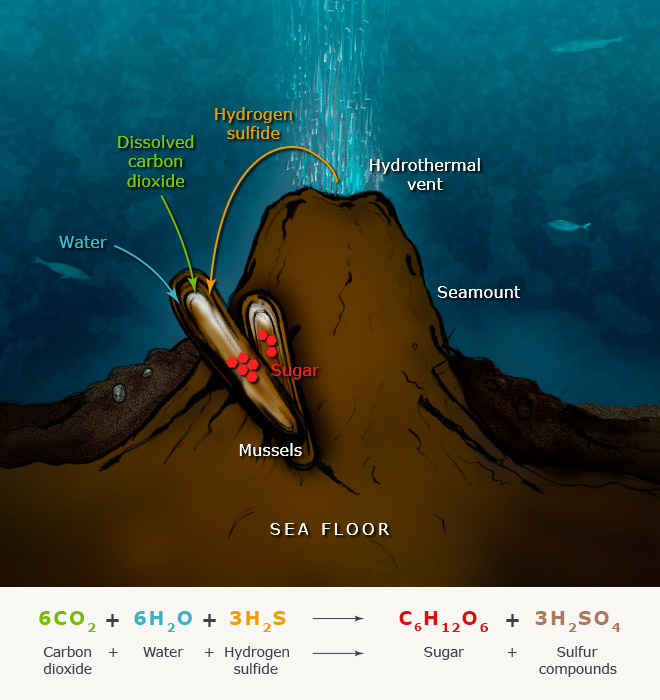
Photosynthesis is the process by which plants use the sun’s energy to make sugar (glucose) for food. Plants absorb energy from sunlight, take in carbon dioxide from the air through their leaves, take up water through their roots, and produce glucose and oxygen. Photosynthesis takes place on land and in shallow water where sunlight can reach seaweeds.
Chemosynthesis is the process by which food (glucose) is made by bacteria using chemicals as the energy source, rather than sunlight. Chemosynthesis occurs around hydrothermal vents and methane seeps in the deep sea where sunlight is absent. During chemosynthesis, bacteria living on the sea floor or within animals use energy stored in the chemical bonds of hydrogen sulfide and methane to make glucose from water and carbon dioxide (dissolved in sea water). Pure sulfur and sulfur compounds are produced as by-products.
In the diagram mussels and tubeworms are using the hydrogen sulfide released from a hydrothermal vent. The chemical equation given here for chemosynthesis is just one of a number of possibilities.
Using this item
Te Ara - The Encyclopedia of New Zealand
This item has been provided for private study purposes (such as school projects, family and local history research) and any published reproduction (print or electronic) may infringe copyright law. It is the responsibility of the user of any material to obtain clearance from the copyright holder.





Comments
Kia ora Rose - yes, that's
Gareth Phipps
04 April 2023
This is an excellent graphic
Rose Hetterscheidt (not verified)
15 March 2023
Me and my associates
Ryan Graney (not verified)
01 June 2018
I really loved this
Luke Campbell (not verified)
01 June 2018
Add new comment